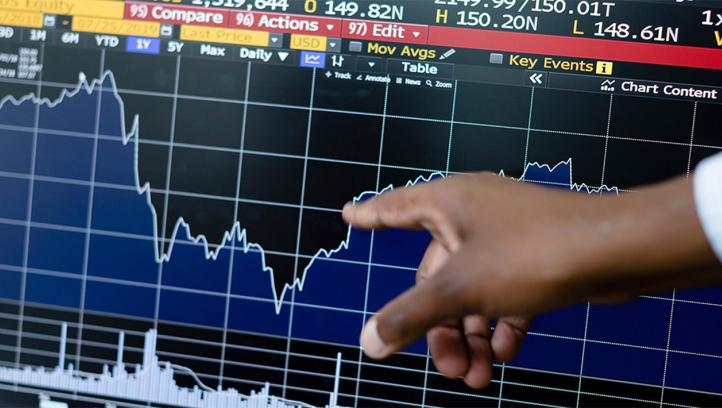
Maintaining a Strong Brand During Turbulent Times

A strong brand is important in the best of economic times; it’s even more vital to survive deep dips in the economy.
But how do you protect your brand during turbulent times? Tim McMahon, PhD, associate professor of practice in the Department of Marketing and Management at Creighton’s Heider College of Business, addresses this timely question in eighth installment of the Business Bites Webinar Series, a collaboration between the Heider College of Business and Greater Omaha Chamber
McMahon draws on the expertise of master branders to present the key components of a strong brand. He outlines examples of companies that have failed their brands when faced with adversity and those that have relied on their brands to not only weather storms but emerge stronger. Finally, McMahon offers direction on how to navigate turbulent conditions, such as the ones the pandemic has ushered in.
FOLLOW THE LEADERS
Want a strong brand? Follow the advice of the late Jerry Garcia, guitarist and song writer for The Grateful Dead: “You don’t need to be considered just the best of the best; you want to be considered the only one who does what you do.” The Grateful Dead were legendary for the devotion of their followers, The Deadheads, who elevated the band to deity status.
Consider the advice of advertising executive Mike Moser, author of United We Brand, who says, “The first step to having a cohesive brand is to have a cohesive company.” Branding starts from within. People inside the firm must know what your company’s brand is about, and then live it.
Brand author David A. Aaker concurs that powerful brands are created from the inside out: “To be relevant, customer-facing employees must learn, believe and live the brand.”
McMahon refers to employees as one of the key touchpoints, a tangible way a consumer connects with the brand. “As a touch point employee, you better understand the purpose, you better understand the engagement, you better understand the culture of your organization, and those things better be operating in tip top shape,” says McMahon. These are the three brand execution musts. What you say and do must resonate with customers as the essence of the brand.
To wit, Amazon knows its purpose is to make customers’ lives simpler. IKEA engages with customers through its “Wonderful Everyday” platform. Pinterest embraces the culture of connectedness, one that helps pinners help each other.
4 COMPONENTS OF A STRONG BRAND
Netflix, Tide, Lego and Southwest. All are household names because all excel at branding. They are relevant and make a difference in their customers’ lives. In particular, all four companies adhere to the four components of a strong brand and excel in at least one: they are customer obsessed, ruthlessly pragmatic, distinctively inspired and pervasively innovative.
Netflix’s model is an example of a brand that is customer obsessed. It began as a media company that sought to make movie viewing incredibly convenient by mailing DVDs to homes, thus negating the drive to the local video store. Further, customers could keep DVDs for as long as they’d like without being charged punitive fees. Netflix then added streaming services for even more convenient viewing and included algorithms that offered customers suggestions based on their past viewing interests.
Tide is ruthlessly pragmatic. Armed with the belief that if your laundry is clean, it smells clean, it expanded its product line to include the popular air freshener and odor-eliminator line, Febreze. Again demonstrating its pragmatism, Tide launched its disaster relief Loads of Hope campaign. It understood that families facing devastating loss at the hands of Mother Nature need clean clothes to help them feel human in the midst of chaos – and that is core of Tide’s expertise – so it resonates. In the wake of tornadoes, hurricanes, and the like, Tide sets up temporary washing facilities for customers displaced from t homes to launder their clothes.
Strong brands are also distinctively inspired, and Lego is a classic example. The building toy is engaging in itself, but the company increased its appeal by aligning with different entertainment franchises – Star Wars and Avengers. It developed theme parks and offered traveling displays to generate continued interest and simultaneously build brand awareness.
Southwest rewrote the rules on air travel and continues the practices to this day. Hence, the company has earned the reputation of being pervasively innovative. Working under the premise of “We don’t do what everybody does; we do what our people want,” Southwest breaks the rules in the way they fly, where they fly, how they fly, and how much they charge you to fly. For example, in a day when all carries charge your bags to fly just to eke out a profit, on Southwest, bags are free.
“Southwest zigs when everybody else zags,” says McMahon, which is why it was the only airline consistently profitable, even post-9/11.
CRISIS RESPONSE: THE GOOD AND THE BAD
Crisis is an event that has the potential to harm the reputation, operations or finances of a business. But it is ALSO the opportunity to gain the public’s attention to prove that you can really do what you say you can do, says McMahon.
When BP’s Deepwater Horizon oil rig exploded, resulting in 11 deaths and the largest oil spill in marine history, company leadership’s response proved it was committed to profit and not fulfilling its mission to successfully and safely sourcing energy. Then-BP CEO Tony Hayward stated in the chaotic aftermath, “I’d like my life back.” This simple sentence spoke volumes to the company’s culture. BP missed a huge opportunity to prove its worth in the face of tragedy.
Two decades earlier the makers of Tylenol did not. When bottles of the popular pain reliever where found laced with cyanide, resulting in five fatalities, Johnson & Johnson embraced the opportunity to right a wrong. Even though it had nothing to do with creating the problem, it took a decisive lead in its solution. It pulled the product. Leadership relied on Johnson & Johnson’s mission of helping healthcare workers and fostering the health of its customers. It remained true to its brand. And while it initially lost millions of dollars, it recouped the loss five times over in reputation gain.
“Your brand should guide your actions,” says McMahon. “Build a strong brand, inside and out, let it guide you and serve as a path for when crisis hits. When you are surrounded by chaos, your brand will be a reassuring constant.”
NAVIGATE EFFECTIVELY IN TURBULENT TIMES
Today’s customers are savvy. They demand three things: authenticity, transparency and relevance. It is important that a company’s marketing communication own who the company is, warts and all. The public has little tolerance for posers. Equally important is open, honest communication. If authenticity and transparency are in place, then a company’s relevance will naturally follow, in both placid and not-so-placid times.
In a perfect world, there would be no oil spills to clean up, no recalls of tainted pills, no natural disasters displacing huge portions of the population. But we don’t live in a perfect world, as the COVID-19 pandemic has taught us. So, how do you effectively protect your brand during turmoil? Follow these six steps:
- Prepare in advance. Align your brand with the company’s DNA. When the two sync, responses to crisis will be second nature. Think Johnson & Johnson’s Tylenol response.
- Be relevant in your customers’ lives. Know your purpose, practice it, and adapt as situations demand. Think Netflix.
- Look to the four components of a strong brand as a guide.
- Remember the three musts for execution of brand: purpose, engagement and culture.
- Shift your perspective to view crisis as an opportunity, not just a danger. Take control when “opportunity” presents itself.
- Be authentic and transparent, and thus relevant.
Every CEO will face a crisis while at the helm of a company. True leaders must own crises of their making, as well as acknowledge the existence of problems that arise for reasons beyond their control. But this is only the first step. What they do to remedy the situation defines them as leaders. They must also protect the brand. This will define them as leaders, and they may just discover that the brand they are protecting will return the favor and protect the company.
This content was developed as part of our Business Bites series, a virtual education opportunity sponsored by the Heider College of Business in partnership with the Greater Omaha Chamber. Request the full interactive Business Bites session to learn more.
Dr. Tim P. McMahon is Associate Professor of Practice in marketing and management in Creighton University’s Heider College of Business MBA program. As an experienced marketing communications executive, he is passionate about teaching and is motivated as a lifelong learner. He believes “we live in an ever-evolving environment that effects the business mission and execution of the strategic plan. It is my role to keep current with the academic and practical aspects of business in marketing and management.”
Dr. McMahon is a sought-after consultant in business and higher education, serving in developing trustworthy relationships with key constituencies, crisis management communication, brand-building, and organizational performance improvement, culture and leadership development.




